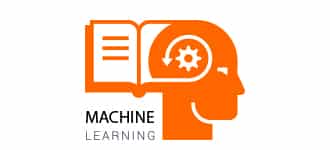Key takeaways:
- Machine learning is the process of teaching a computer system to make accurate data-based predictions.
- Machine learning can be used to optimize business practices by streamlining and automating daily tasks. Machine learning allows for more creativity and time management so you can focus on your business strategy.
- The many machine learning methods are used actively to automate tasks better and with accuracy.
- The future of machine learning is promising with the boom in digitalization and its ever effective way in which it makes tasks and subjects easier.
The availability of data, the growth of powerful and affordable computing, and the development of Machine Learning (ML) have spurred the construction of increasingly sophisticated models based on machine learning algorithms. These models can process more complicated data faster and more accurately, providing businesses with the ability to quickly identify lucrative opportunities and potential risks. Machine learning tools help enterprises and businesses quickly identify lucrative opportunities and potential risks.
What is machine learning?
We know that humans learn from their past experiences and that robots follow human-given commands. But what if humans can teach machines to learn from previous data and accomplish tasks that people can do far more quickly?
Machine learning is the process of teaching a computer system to make accurate data-based predictions. For example, it may need to predict whether an animal in a photo is a cat or a dog, spot people crossing the street in front of an autonomous vehicle, or determine if an email is a hoax. Also, one might have to discern whether the usage of the word book in a sentence refers to a hotel reservation or a paperback or recognize speech precisely to create content for a YouTube video.
The history of machine learning can be traced back to the early days of artificial intelligence when researchers sought to develop algorithms that could mimic the human ability to learn from experience. In the 1950s and 1960s, machine learning was heavily influenced by the work of psychologists and cognitive scientists who were trying to understand how human beings learn. In the 1970s and 1980s, machine learning algorithms were developed for solving specific tasks such as image recognition and speech recognition.
In the 1990s, machine learning was revitalized by introducing new techniques such as support vector machines and artificial neural networks. These techniques allowed for the development of more powerful and generalizable learning algorithms. Machine learning is used in various applications, ranging from automated medical diagnosis to self-driving cars.
Popular machine-learning methods
Machine learning models can be classified as either supervised or unsupervised. Supervised learning models learn from a labeled training dataset, where a human supervisor provides the labels. Supervised learning aims to create a model that can predict new data based on patterns acquired from training data. Classification and regression are two common supervised learning applications.
On the other hand, unsupervised learning models learn from an unlabeled training dataset. Unsupervised learning seeks to discover hidden patterns or structures in data. Clustering and dimensionality reduction are two common unsupervised learning applications.
The learning methods are further categorized as follows-
| Learning methods | Description |
|---|---|
| Regression | Regression modeling is a statistical technique of figuring out the connections between various variables. |
| Classification | The process of classifying an observation involves giving it a class label. |
| Clustering | The act of grouping data elements is called clustering. |
| Dimensionality reduction | It is the process of reducing your feature set’s size or, more simply, the amount of features. |
| Ensemble methods | The predictions of various models are combined through ensemble methods. |
| Neutral net and deep learning | Deep learning has a more complicated architecture than neutral nets, which are based on artificial neural networks, and is more flexible and accurate. |
| Transfer learning | It enables us to address related problems by using the knowledge gained from one problem by a model. |
| Reinforcement learning | This model helps in learning through repeated practice. |
| Natural language processing | This model uses linguistics and computer intelligence to solve a problem or find a solution. |
| Word embeddings | This method, with the help of natural language processing, addresses the problem related to translation, question answering and others. |
- Regression
A regression model is a statistical tool to identify the relationships between different variables. We identify a target value based on independent predictors in a regression model. The target value is usually a dependent variable, such as sales volume or stock price. The independent predictors are usually independent variables, such as market conditions or economic indicators.
- Classification
Classification is a process of assigning a class label to an observation. The output of classification is discrete. That is, each observation is assigned to a specific class. Supervised classification is where the classes are known in advance, and the goal is to predict the class of an unknown observation. Unsupervised classification is where the classes are not known in advance, and the goal is to discover the structure of the data.
- Clustering
Clustering is the process of grouping data items. Customer segmentation, fraud detection, and document classification are all common applications. K-means, hierarchical, mean shifts, and density-based clustering are common clustering approaches. While each methodology uses a different way to locate clusters, they all aim for the same result.
- Dimensionality reduction
It is the process of lowering the size or the number of features in your feature set. Most dimensionality reduction strategies are classified as either feature deletion or feature extraction. Principal component analysis, or PCA, is a popular method for dimensionality reduction.
- Ensemble methods
Ensemble methods are a type of machine learning algorithm that combine the predictions of multiple models. Ensemble methods can improve a model’s accuracy by reducing variance, bias, or both. In some cases, ensemble methods can also be used to improve the interpretability of a model.
- Neutral net and deep learning
Neutral net and deep learning are two different approaches to machine learning. While neutral nets are based on artificial neural networks, deep learning involves a more complex architecture that allows for greater flexibility and accuracy.
Neutral nets are typically used for tasks such as image recognition and classification, while deep learning is often used for natural language processing and image recognition tasks.
Deep learning is a newer approach to machine learning and has shown promise in many applications. However, it is also more computationally intensive than neutral nets and requires more training data.
- Transfer learning
Transfer learning is a technique in machine learning that allows us to use the knowledge learned by a model on one problem to solve another related problem. For example, if we have a model trained to recognize objects in images, we can use that model to also recognize objects in videos. This is because the knowledge learned by the model about shapes, colors, and patterns can be applied to both images and videos.
- Reinforcement learning
Reinforcement learning is a powerful tool that can be used to solve a variety of problems. For example, reinforcement learning can teach a robot how to navigate a maze. By trial and error, the robot can learn which actions lead to the goal of the maze and which actions do not.
Similarly, reinforcement learning can teach a child how to ride a bicycle. Through repeated practice, the child can learn which actions lead to success (staying upright on the bike) and which actions do not (falling off the bike).
- Natural language processing
Natural language processing is a way for computers to understand human language. Computers can understand and respond to our language. It can help us do things like search for information on the internet.
NLP technologies are used in various applications, including machine translation, text-to-speech synthesis, question-answering, information extraction, and text summarization.
- Word embeddings
Word embeddings are used in many Natural Language Processing (NLP) applications, such as machine translation, question answering, and text classification. They are also used in word analogy tasks, such as determining the similarity between two words.
It is a distributed representation of text that is perhaps one of the key breakthroughs for the impressive performance of deep learning models on natural language processing problems.
Advantages of using machine learning
There are many advantages of using machine learning, such as-
- Repetitive tasks are automated
Automation is becoming more ubiquitous practically everywhere in the world. Machine learning algorithms ensure that your company saves time and money. Developers and data analysts can devote more time to higher-level activities that a computer cannot perform. Meanwhile, let your machine learning algorithms take over the functions that have already been done redundantly.
- Improves with time
As new machine learning algorithms are created, they advance on their own. Its technology is always changing and improving in terms of efficiency and accuracy. As more data is processed and assessed, the system becomes even more accurate than it was before. Such an algorithm, with a near-perfect accuracy rate, becomes valuable for making better business judgments and projections.
- Widely applicable
Different firms and organizations can benefit from machine learning regarding market growth and human labor performance. Machine learning is used by healthcare providers, e-commerce site operators, and manufacturers to stay ahead of the competition in their respective fields.
How to choose the right machine learning algorithm?
You can choose the right machine learning method based on the following factors-
- Accuracy
The efficacy of a model is measured by the proportion of two results to total cases in machine learning. We must evaluate model modules in machine learning that calculate industry-standard evaluation measures.
- Training time
Supervised learning training uses past data to construct a machine-learning model that minimizes loss. The number of minutes or hours required to train a model can vary based on the algorithms available.
- Linearity
In statistics and machine learning, linearity refers to the existence of a linear relationship between a variable and the constant in your data collection.
- Number of parameters
The parameters are many methods that data scientists might use to configure an algorithm. Some numbers have a genuine impact on the behavior of an algorithm such as error tolerance, iteration count, and variance choices on how the algorithm behaves.
- Number of features
The feature of machine learning is a variable of the phenomenon you are attempting to understand and research. The number of features in certain forms of data might be relatively big compared to the number of data points. A greater amount of features might slow down some learning algorithms, resulting in extremely long training times. Support machine learning is ideal for this circumstance since it can deal with many features.
Future of machine learning
During the post-industrialization period, people strove to create a machine that acts and performs all activities the same way a human does. As a result, Machine Learning is AI’s greatest gift to the human race for effectively achieving goals. On the other hand, self-taught machine approaches have significantly altered major corporations’ employability standards.
The future of machine learning is really promising. Healthcare, search engines, internet marketing, and education are some of the primary beneficiaries. It seems nearly impossible to obtain target results in an area free of this new technology. Machine learning could benefit an enterprise or an organization, whether a multinational company, startup or an angel company.
How to learn Machine Learning?
When you are learning anything new, it is important to first figure out where things finish up and what your interests are in relation to the subject matter. Doing so will help you stay focused because you will know that there isn’t anything essential that you are missing out on. If you clearly understand the landscape, it will be easy to map out a plan in your head.
Here are some tips on how to learn machine learning effectively.
- Studying existing algorithms and models
- Attending workshops and conferences
- Reading articles and papers from experts in the field
It is also important to have access to good-quality data sets to train machine learning models and to be able to experiment with different algorithms to find out which one works best for the specific task at hand.
Online learning has become a popular way to gain knowledge and skills in various subjects. One such subject is machine learning.
M.Sc. Data Science and MBA in Data Science are two popular online learning programs that offer machine learning as a specialization. Both programs are designed by MAHE and are available on the Online Manipal platform. They offer a variety of features that make them ideal for learning machine learning. Some of these features include online courses, live lectures, and hands-on projects.
Conclusion
Understanding these machine learning algorithms will help you to better gain insight in the overall scope of machine learning, and give you a foundation to build upon in your analysis and research.
Prepare for your next career milestone with us












